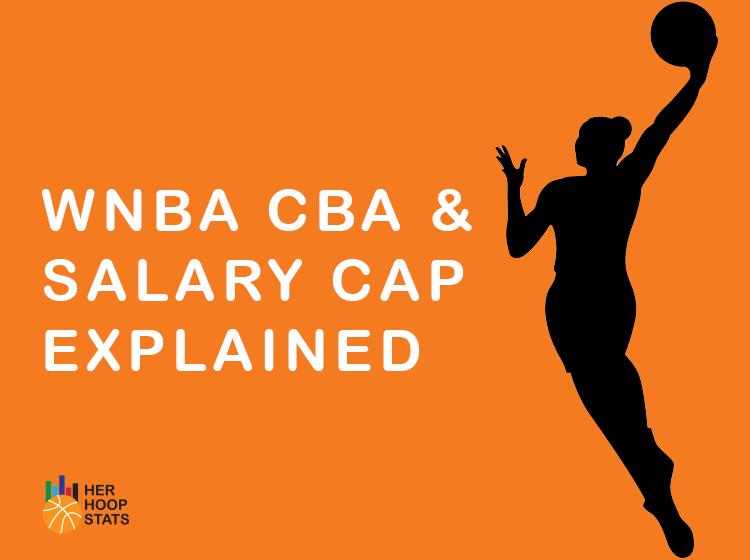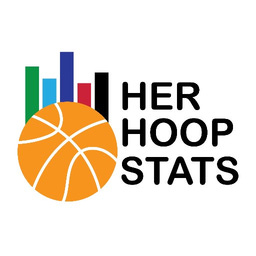WNBA CBA Explained: Extensions
What are the requirements to receive a contract extension? What are the possible terms of an extension? Can a player restructure their contract?
Thanks for reading the Her Hoop Stats Newsletter. If you like our work, be sure to check out our stats site, our podcast, and our social media accounts on Twitter, Facebook, and Instagram. You can also buy Her Hoop Stats gear, such as laptop stickers, mugs, and shirts!
Haven’t subscribed to the Her Hoop Stats Newsletter yet?
Welcome back to our WNBA CBA and Salary Cap Explained series. As part of our mission to unlock better insight about the women’s game, we’re breaking down the rules outlined in the 350-page WNBA Collective Bargaining Agreement (CBA), covering the 2020 through 2027 seasons, in plain language. Each article will focus on a bite-size chunk of the CBA to make the concepts more digestible. To catch up on the previous 10 pieces in the series, check out the list at the bottom of this piece. We are also compiling all of this information on the Her Hoop Stats website in a single FAQ document.

In the next two pieces, we will break down how the CBA handles extensions and trades. In this installment, we will discuss the requirements and terms of extensions and about whether contracts can be restructured. The second installment will break down trades, including what can and cannot be traded, the trade deadline, and sign-and-trade rules.
What are the requirements to receive a contract extension?
Veteran contracts can only be extended if they were originally for two or more years, and no extensions can be signed until the one-year anniversary of the contract originally being signed or the one-year anniversary of the last extension. Extensions, may not be signed between the end of the regular season and January 31, but they can be negotiated between January 15 and January 31.
Rookie scale contract extensions must be signed between February 1 and May 15 following the third season covered by the player’s rookie scale contract. Only drafted rookies have rookie-scale contracts that can last four years, and therefore are the only contracts that may be extended, meaning undrafted rookie contracts cannot be extended. Key players who could sign rookie-scale extensions this offseason include A’ja Wilson, Kelsey Mitchell, and Diamond DeShields, who were picked 1-2-3 in the 2018 WNBA Draft.
What are the possible terms of an extension?
Rookie and veteran extensions can be for no more than three seasons from the date the extended contract begins. This means if a three-year extension is signed with two years left on the original contract, the contract now runs for a total of five more years: the two remaining years of the original contract and the three years of the extension. The extension does not affect the terms for the years covered by the original contract.
A veteran contract extension can be for a base salary up to the applicable maximum, but the player’s base salary may not increase by more than 20% of the last season in the original contract. For veteran extensions with five or more years of service (or six through 2020), the applicable maximum is the supermax, but the salary still must increase by no more than 20% of the last season under contract.
Rookie-scale extensions can also be for the supermax and can immediately increase to that level, which is an increase of between 170% and 235% depending on the player’s draft position. For example, if top-two draft picks Sabrina Ionescu or Satou Sabally receive a supermax extension beginning in 2024, going from $86,710 to $241,984 will be a 179% increase. If Minnesota’s Crystal Dangerfield, the No. 16 pick in the 2020 draft, earns a supermax contract, she will go from $76,183 to $241,984 in 2024, which is an increase of 218%.
For seasons after the first year of the extension, a veteran player’s base salary can increase or decrease by a maximum of 3% of the base salary in the last season of the original contract. However, rookie-scale extensions can increase or decrease by 3% of the base salary in the first season of the extension. This means a player who signs a two-year veteran extension for $100,000 after the final year of their contract and had a base salary of $85,000 in that final year can earn up to $102,550 in year two. A player who signs a two-year extension to their rookie-scale contract where the first year has a salary of $100,000 can earn up to $103,000 in the second year.
Extensions may include trade bonuses, even if the original contract did not include one, but they will not become active until the first season covered by the extension. Time off bonuses can be added even if the original contract did not include one, and they take effect in the first offseason following the extension.
Can a player restructure their contract?
WNBA players are not able to restructure their existing contracts, as the length and base salaries for the original contract are locked in. A team could get around this by waiving the player and then re-signing the player to a more team-friendly deal. However, doing this is risky, as the player would need to clear waivers and then not sign with another team in the 10-day waiting period when their prior team is not allowed to sign them.
There is precedent for this, with the Phoenix Mercury pulling off the maneuver with Leilani Mitchell in 2019. Even though it worked, Mitchell was upset by this move which contributed to her leaving in the following offseason. Additionally, this is tricky territory because teams must not make any agreements with the player before doing so. Making a tentative agreement to cut and then re-sign them is technically a violation of the league’s anti-collusion provision. Whether the league takes action or not, the only way to do this within the framework of the CBA is if the team and player have absolutely no explicit or implicit agreement ahead of time.
Missed our previous installments? Here are all the topics we have covered so far…
This series is about learning, so we want to hear from you! If you would like a clarification for any rule, suggestions for future CBA Explained topics, or any other questions, please feel free to let us know in the comments or tweet at us @herhoopstats.
Thanks for reading the Her Hoop Stats Newsletter. If you like our work, be sure to check out our stats site, our podcast, and our social media accounts on Twitter, Facebook, and Instagram.



